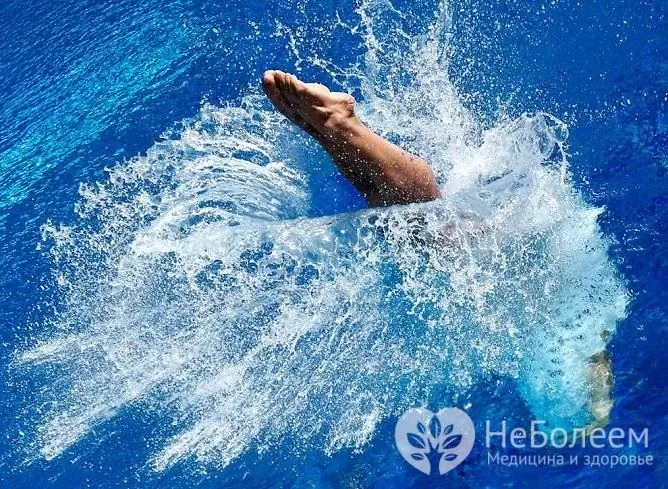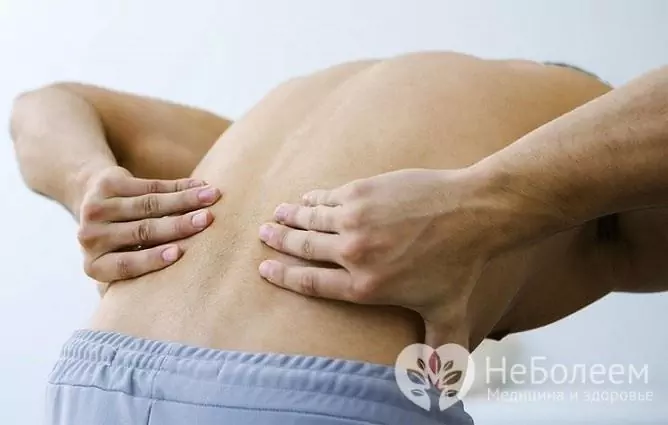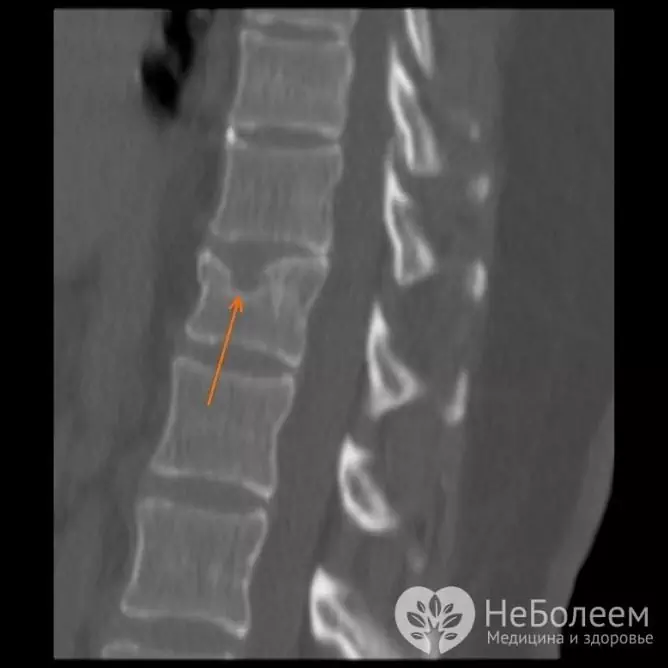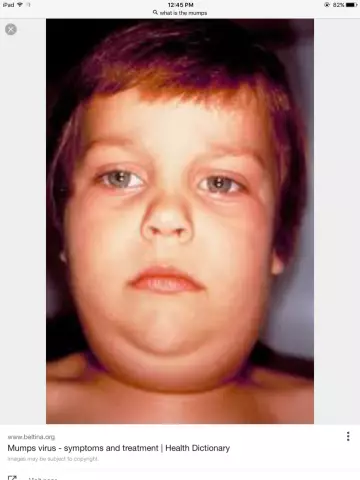- Author Rachel Wainwright [email protected].
- Public 2023-12-15 07:39.
- Last modified 2025-11-02 20:14.
Schmorl's hernia
The content of the article:
- Causes
- Schmorl's hernia symptoms
- Diagnostics
- Schmorl's hernia treatment
- Prevention
- Consequences and complications
Schmorl's hernia is a partial prolapse (indentation) of the cartilaginous substance of the intervertebral disc into the spongy part of the body of the adjacent vertebra. A hernial protrusion does not compress the substance of the spinal cord, blood vessels or nerve roots - this is how Schmorl's hernia differs from a true intervertebral hernia.

The manifestation of Schmorl's hernia
Schmorl's hernia is characterized by a subclinical form, that is, a course with minimal clinical manifestations or their complete absence. Often, even multiple Schmorl's hernias are discovered by chance during an X-ray examination for another reason.
In fact, the term "Schmorl's hernia" does not denote a disease of the spinal column, but is an X-ray sign of a malfunction of the intervertebral disc, which in the future can lead to the formation of a true intervertebral hernia or other complication in this segment.
Causes
Most often, Schmorl's hernias are detected in children and adolescents, which is explained by the rapid and disproportionate growth of the spinal column, in which the growth of cartilage tissue occurs faster than the vertebral bodies have time to grow. This entails the formation of voids in the spongy substance, into which areas of the intervertebral disc are pressed.
As a rule, the cause of multiple Schmorl's hernias is anomalies in the structure of the vertebral endplates associated with genetic defects.
Osteoporosis, weightlifting, and a sedentary lifestyle can lead to the discharge of bone tissue, which can cause the formation of Schmorl's hernia.
Schmorl's hernia of the cervical spine with a higher frequency than in the general population is detected in divers. Schmorl's hernia of the thoracic region is often formed during pregnancy, as well as in women who are actively involved in shaping.

Schmorl's hernia of the cervical spine more often develops in divers
Schmorl's hernia symptoms
The course of Schmorl's hernia is latent (hidden). This is due to the fact that the cartilaginous nodule does not reduce the lumen of the spinal canal, does not squeeze the nerve roots, and does not entail the development of local inflammation.
Clinical symptoms of Schmorl's hernia can occur with multiple protrusions, but in this case they are not pronounced sharply (for example, with Schmorl's hernias of the cervical spine, the patient may be disturbed by a slight pain in the neck).

Schmorl's hernia is characterized by chronic back pain that disappears while lying down
Schmorl's hernia of the thoracic spine is manifested by chronic back pain, which is significantly weakened or completely disappears in the supine position.
Diagnostics
The main method for diagnosing Schmorl's hernias is X-ray of the spine.

Schmorl's hernia on X-ray
Schmorl's hernia treatment
Schmorl's hernia treatment is aimed at improving metabolic processes in the tissues of the spine. This approach allows you to prevent the progression of cartilaginous protrusion, as well as to avoid the development of serious complications. For this purpose, appointed:
- Diet therapy. The diet must include a sufficient amount of calcium-rich foods (cheese, cottage cheese, milk, yogurt).
- Calcium preparations. The expediency of their use should be confirmed and controlled by laboratory, since an excess of calcium has a negative effect on the ligamentous apparatus and organs of the urinary system.
- Limiting the load on the spine. Acrobatics, aerobics, diving, riding a motorcycle or bicycle are not recommended.
- Normalization of body weight. Excess weight increases the static load on the spine, thereby creating the prerequisites for an increase in cartilaginous protrusion.
- Physiotherapy, massage, swimming, manual therapy, underwater traction of the spine, reflexology. These methods improve blood circulation and metabolic processes in the tissues of the spine, strengthen its ligamentous apparatus.

A significant role in the treatment of Schmorl's hernia is played by physiotherapy exercises and physiotherapy
Surgical treatment of Schmorl's hernia is not performed. The need for surgery may arise only in case of complications (for example, with a compression fracture of the spine).
Prevention
Prevention of the formation and growth of Schmorl's hernias includes:
- maintaining an active lifestyle (but avoiding overloading the spine);
- proper nutrition;
- control of body weight;
- observance of the optimal regime of work and rest.
Consequences and complications
A progressive Schmorl's hernia can lead to the development of a number of complications, such as:
- decreased flexibility and mobility of the spine;
- rachiocampsis;
- early development of spondyloarthrosis;
- compression fractures of the vertebral bodies;
- true herniated intervertebral discs.
YouTube video related to the article:

Elena Minkina Doctor anesthesiologist-resuscitator About the author
Education: graduated from the Tashkent State Medical Institute, specializing in general medicine in 1991. Repeatedly passed refresher courses.
Work experience: anesthesiologist-resuscitator of the city maternity complex, resuscitator of the hemodialysis department.
The information is generalized and provided for informational purposes only. At the first sign of illness, see your doctor. Self-medication is hazardous to health!






